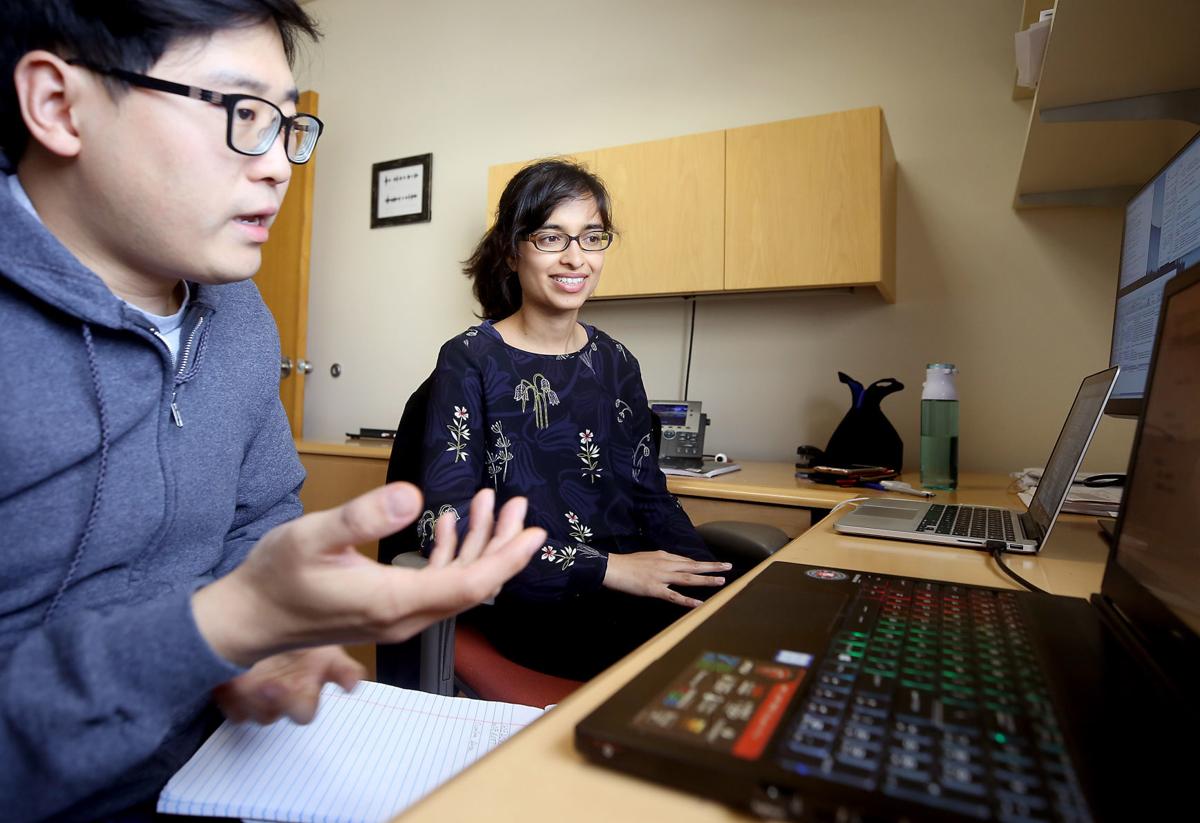From black holes to cancer, Megha Padi tackles some of the most vexing problems in the universe with enthusiasm and robust mathematical tools to back her up.
Padi, an assistant professor of molecular and cellular biology at the UA, graduated in 2009 with a Ph.D. in theoretical astrophysics from Harvard University. She studied the high-energy physics of black holes. By graduation, however, Padi became dissatisfied — no equipment on earth could simulate the conditions needed to test her ideas about black holes.
As she realized her need for more data to do her work, Padi grew increasingly drawn to the wealth of information produced by the 13-year-long Human Genome Project, an investigation that identified the more than 20,000 genes encoded in a strand of human DNA.
After graduation, Padi was hired as a research fellow at the Dana-Farber Cancer Institute at Harvard Medical School, where she used her background in physics to build an algorithm that allowed her to understand how many mutated genes work together to cause disease.
Padi has been the director of the University of Arizona Cancer Center Bioinformatics Shared Resources program and a UA professor since January 2018.
A break from tradition
The human genome has been sequenced for 15 years, “but even after all that time, we have no idea how heart disease occurs, how diabetes occurs, how (some) cancers occur — all these things that people were hoping that we could cure,” she said.
What makes these diseases so difficult to study is the fact they do not arise from one gene mutation, but from many working together. The problem is, biologists traditionally think in terms of how single genes give rise to disease.
Padi took a different approach.
At Dana-Farber, she developed a computer algorithm called ALPACA that allowed her research team to understand how multiple genes work in tandem to cause disease. ALPACA was inspired by the concept of network analysis, Padi said. In a similar way that social networks form through patterns of communication, so do gene networks.
For example, with your cellphone, you can call anyone in the world, but you don’t. You are much more likely to call people within your community, said John Quackenbush, chairman of Harvard’s biostatistics department and her former adviser.
Genes work in a similar way: They are more likely to communicate within their communities. The pattern of conversations within the gene communities differ between healthy cells and diseased cells.
Padi’s work on ALPACA allowed her team to identify rogue communities of genes and compare them with genes within healthy cells.
“We think network analysis will help us choose more effective treatments which are personalized to each patient’s genome,” she said.
This would not have been possible had the large genome-wide data sets from human genome not been available, she said.
Researchers use math in biology of course, “but now it’s really becoming very clear that this is not just an indulgence of physicists,” Padi said. Higher-level math and computer-aided algorithms are what’s needed to solve the mysteries of complex diseases. This is exactly what Padi brings to the table.
Building bridges
Padi has always been curious about how things work.
“I started off doing theoretical physics because there’s so many things that are unexplained.” The mysteries of black holes sounded really romantic, she said.
“I still enjoy hearing about black holes, especially in Arizona. There’s really exciting observations happening here.” For example, the University of Arizona Steward Observatory is a partner on the Event Horizon Telescope, a global network of radio telescopes used to observe the super-massive black hole in the center of the Milky Way.
“What I found is there is so many exciting unexplained phenomenon in biology, too,” Padi said.
Padi was drawn to the UA because it offered strong math, biology and medical research, she said. Also, she can easily recruit qualified students to work in her lab.
“We’ve been building the systems biology department at the UA for some time now. Megha is the fifth we’ve hired with a strong computational biology and math background,” said Joyce Schroeder, department head of molecular and cellular biology at the UA. “She’s part of the push to bring a multidisciplinary approach to biology.”
Padi is also hoping she can get more physicists to join her in the biological sciences.
She presented her research at a well-attended talk for physics graduate students. The lecture hall was nearly full and the audience was engaged, said UA physics professor Charles Wolgemuth, who recruited her to speak.
“She can completely speak both languages,” Schroeder said, referring to physics and biology.
“I went from theoretical physics to computational biology, and then from computational biology to experimental biology ... I think that’s useful in science if you want to do something interdisciplinary,” Padi said. “It allows you to make connections that other people can’t.”
“She helps us understand how computational biology can help us do what we do so much better,” Schroeder said. “She has the ability to solve questions that very few people on the planet can solve now.”





